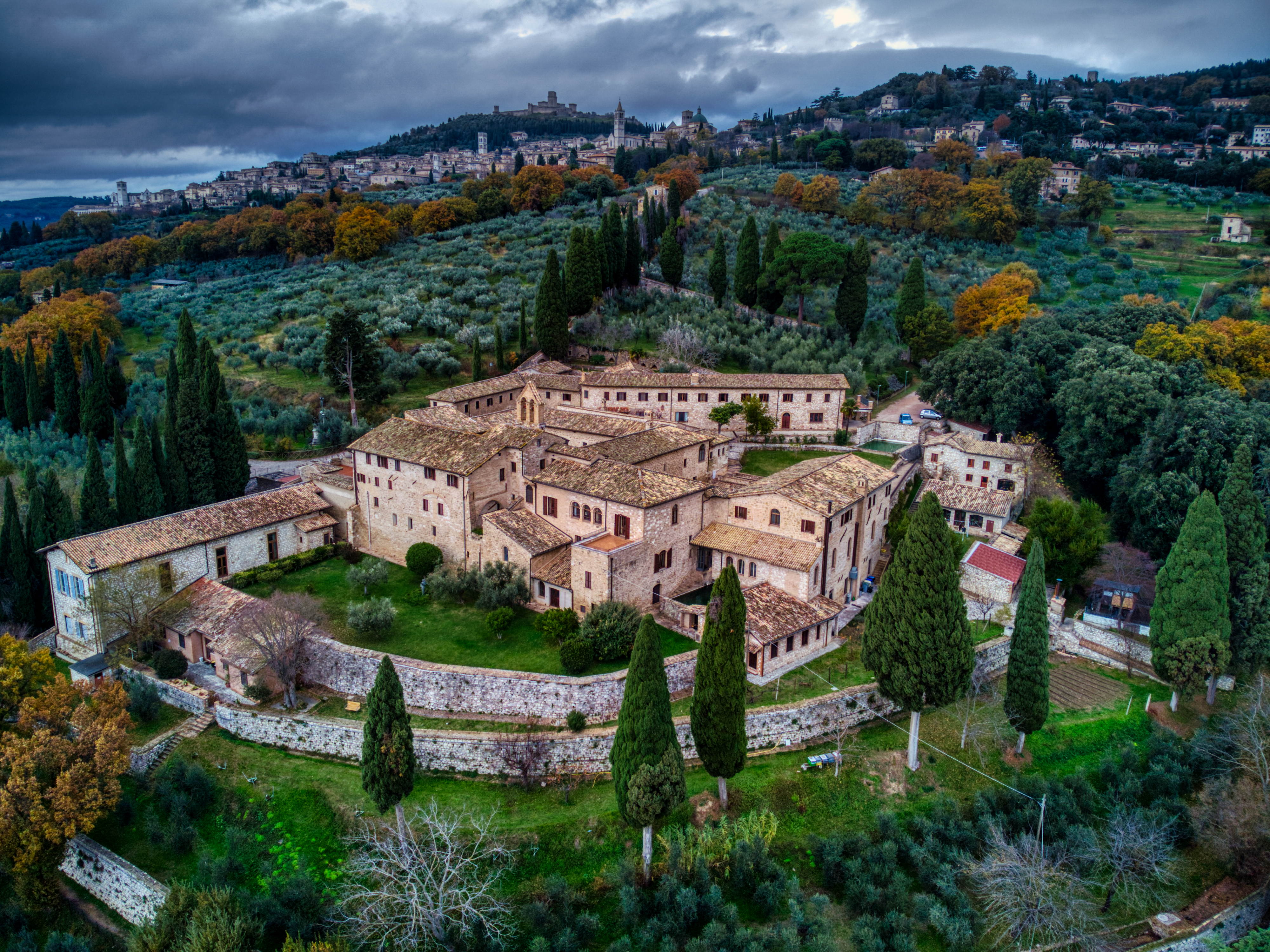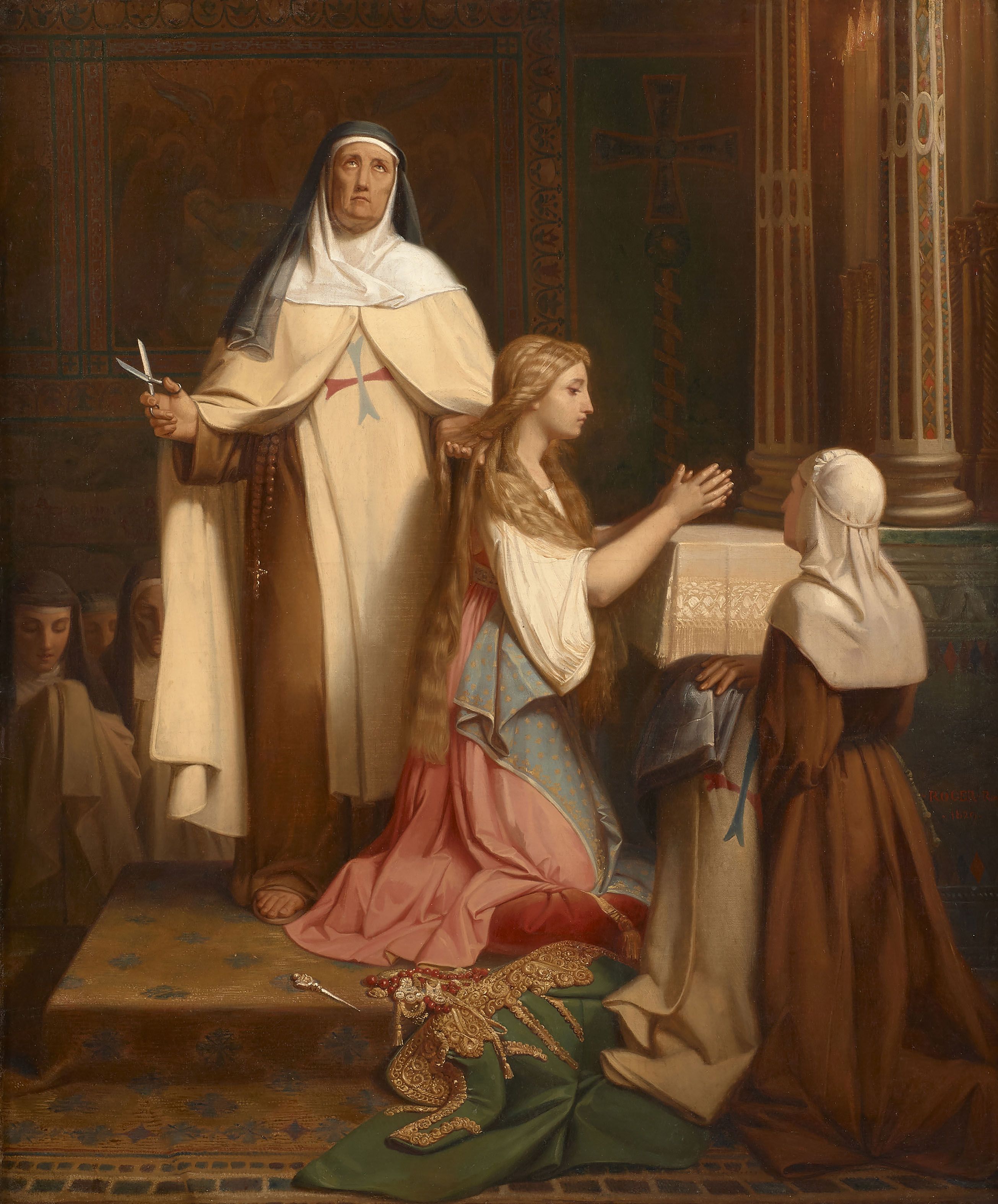|
Vow Of Enclosure
The vow of enclosure is a religious vow made by some branches of the Poor Clares in addition to the three vows of obedience, poverty and chastity. The sisters known as "extern sisters" (or "externs") do not make this additional vow in order to be able to handle some of the community's needs outside the papal enclosure. The Poor Clares constitute the second branch of the Order of Friars Minor, founded in the thirteenth century by Clare of Assisi under the inspiration of Francis of Assisi. References Poor Clares 1212 establishments in Europe Enclosure Enclosure or inclosure is a term, used in English landownership, that refers to the appropriation of "waste" or "common land", enclosing it, and by doing so depriving commoners of their traditional rights of access and usage. Agreements to enc ... Living arrangements {{Catholicism-stub ... [...More Info...] [...Related Items...] OR: [Wikipedia] [Google] [Baidu] |
Poor Clares
The Poor Clares, officially the Order of Saint Clare (Latin language, Latin: ''Ordo Sanctae Clarae''), originally referred to as the Order of Poor Ladies, and also known as the Clarisses or Clarissines, the Minoresses, the Franciscan Clarist Order, and the Second Order of Saint Francis, are members of an Enclosed religious orders, enclosed order of nuns in the Roman Catholic Church. The Poor Clares were the second Franciscan branch of the order to be established. The first order of the Franciscans, which was known as the Order of Friars Minor, was founded by Saint Francis of Assisi in 1209. Three years after founding the Order of Friars Minor, Francis of Assisi and Clare of Assisi founded the Order of Saint Clare, or Order of Poor Ladies, on Palm Sunday in the year 1212. They were organized after the manner of the Order of Friars Minor and before the Third Order of Saint Francis, Third Order of Saint Francis was founded. As of 2011, there were over 20,000 Poor Clare nuns in over ... [...More Info...] [...Related Items...] OR: [Wikipedia] [Google] [Baidu] |
Religious Vows
Religious vows are the public vows made by the members of religious communities pertaining to their conduct, practices, and views. In the Buddhist tradition, in particular within the Mahayana and Vajrayana traditions, many different kinds of religious vows are taken by the lay community as well as by the monastic community, as they progress along the path of their practice. In the monastic tradition of all schools of Buddhism, the Vinaya expounds the vows of the fully ordained Nuns and Monks. In the Christian tradition, such public vows are made by the religious cenobitic and eremitic of the Catholic Church, Lutheran Churches, Anglican Communion, and Eastern Orthodox Churches, whereby they confirm their public profession of the evangelical counsels of poverty, chastity, and obedience or Benedictine equivalent. The vows are regarded as the individual's free response to a call by God to follow Jesus Christ more closely under the action of the Holy Spirit in a particular form of ... [...More Info...] [...Related Items...] OR: [Wikipedia] [Google] [Baidu] |
Vow Of Obedience
In the Catholic Church, the vow of obedience is one of the three vows of professing to live according to the evangelical counsels. It forms part of the religious vows that are made both by members of the religious institutes and diocesan hermits. Description This is stipulated in *the candidate's respective Church law, for example in the Roman Catholic Church, the 1983 Code of Canon Law (see canons 573, 601, 603.2) *the candidate's respective rule, for example for those that are to be received into a Benedictine monastic community the Rule of St Benedict (ch. 58.17). The 1983 Code of Canon Law (canon 601) defines it as follows: :"The evangelical counsel of obedience, undertaken in a spirit of faith and love in the following of Christ who was obedient even unto death requires a submission of the will to legitimate superiors, who stand in the place of God when they command according to the proper constitutions." [...More Info...] [...Related Items...] OR: [Wikipedia] [Google] [Baidu] |
Poverty
Poverty is a state or condition in which an individual lacks the financial resources and essentials for a basic standard of living. Poverty can have diverse Biophysical environment, environmental, legal, social, economic, and political causes and effects. When evaluating poverty in statistics or economics there are two main measures: ''absolute poverty'' which compares income against the amount needed to meet basic needs, basic personal needs, such as food, clothing, and Shelter (building), shelter; secondly, ''relative poverty'' measures when a person cannot meet a minimum level of living standards, compared to others in the same time and place. The definition of ''relative poverty'' varies from one country to another, or from one society to another. Statistically, , most of the world's population live in poverty: in Purchasing Power Parity, PPP dollars, 85% of ... [...More Info...] [...Related Items...] OR: [Wikipedia] [Google] [Baidu] |
Chastity
Chastity, also known as purity, is a virtue related to temperance. Someone who is ''chaste'' refrains from sexual activity that is considered immoral or from any sexual activity, according to their state of life. In some contexts, for example when making a vow of chastity, chastity means celibacy. Etymology The words ''chaste'' and ''chastity'' stem from the Latin adjective ("cut off", "separated", "pure"). The words entered the English language around the middle of the 13th century. ''Chaste'' meant "virtuous", "pure from unlawful sexual intercourse" or (from the early 14th century on) as a noun, a virgin, while ''chastity'' meant "(sexual) purity". Thomas Aquinas links (chastity) to the Latin verb ("chastise, reprimand, correct"), with a reference to Aristotle's '' Nicomachean Ethics'': "Chastity takes its name from the fact that reason 'chastises' concupiscence, which, like a child, needs curbing, as the Philosopher states". In Abrahamic religions For many Jews, C ... [...More Info...] [...Related Items...] OR: [Wikipedia] [Google] [Baidu] |
Order Of Friars Minor
The Order of Friars Minor (commonly called the Franciscans, the Franciscan Order, or the Seraphic Order; Post-nominal letters, postnominal abbreviation OFM) is a Mendicant orders, mendicant Catholic religious order, founded in 1209 by Francis of Assisi. The order adheres to the teachings and spiritual disciplines of the founder and of his main associates and followers, such as Clare of Assisi, Anthony of Padua, and Elizabeth of Hungary, among many others. The Order of Friars Minor is the largest of the contemporary Religious institute#Categorization, First Orders within the Franciscan movement. Francis began preaching around 1207 and traveled to Rome to seek approval of his order from Pope Innocent III in 1209. The original Rule of Saint Francis approved by the pope disallowed ownership of property, requiring members of the order to beg for food while preaching. The austerity was meant to emulate the life and ministry of Jesus Christ. Franciscans traveled and preached in the ... [...More Info...] [...Related Items...] OR: [Wikipedia] [Google] [Baidu] |
Clare Of Assisi
Chiara Offreduccio (16 July 1194 – 11 August 1253), known as Clare of Assisi (sometimes spelled ''Clara'', ''Clair'' or ''Claire''; ), is an Italians, Italian saint who was one of the first followers of Francis of Assisi. Inspired by the teachings of St. Francis, she founded the Poor Clares, Order of Poor Ladies, a Monasticism, monastic religious order for women in the Franciscan tradition. The Order of Poor Ladies was different from any other order or convent because it followed a rule of strict poverty. Clare wrote their Rule of Life, the first set of monastic guidelines known to have been written by a woman. Following her death, the order she founded was renamed in her honor as the Order of Saint Clare, commonly referred to today as the Poor Clares. Her feast day is on 11 August. Early life Clare was born in Assisi to the Offreduccio household during the Italy in the Middle Ages#High Middle Ages (11th–13th centuries), High Middle Ages, the eldest daughter of Favarone o ... [...More Info...] [...Related Items...] OR: [Wikipedia] [Google] [Baidu] |
Francis Of Assisi
Giovanni di Pietro di Bernardone ( 1181 – 3 October 1226), known as Francis of Assisi, was an Italians, Italian Mysticism, mystic, poet and Friar, Catholic friar who founded the religious order of the Franciscans. Inspired to lead a Christianity, Christian life of poverty, he became a Mendicant, beggar and itinerant preacher. One of the most venerated figures in Christianity, Francis was canonized by Pope Gregory IX on 16 July 1228. He is commonly portrayed wearing a brown Religious habit, habit with a rope tied around his waist, featuring three knots symbolizing the evangelical counsels of poverty, chastity, and obedience. In 1219, he went to Egypt in an attempt to convert the sultan al-Kamil and put an end to the conflict of the Fifth Crusade. In 1223, he arranged for the first live nativity scene as part of the annual Christmas celebration in Greccio. According to Christian tradition, in 1224 Francis received the stigmata during the Vision (spirituality), apparition of ... [...More Info...] [...Related Items...] OR: [Wikipedia] [Google] [Baidu] |
1212 Establishments In Europe
1 (one, unit, unity) is a number, numeral, and glyph. It is the first and smallest positive integer of the infinite sequence of natural numbers. This fundamental property has led to its unique uses in other fields, ranging from science to sports, where it commonly denotes the first, leading, or top thing in a group. 1 is the unit of counting or measurement, a determiner for singular nouns, and a gender-neutral pronoun. Historically, the representation of 1 evolved from ancient Sumerian and Babylonian symbols to the modern Arabic numeral. In mathematics, 1 is the multiplicative identity, meaning that any number multiplied by 1 equals the same number. 1 is by convention not considered a prime number. In digital technology, 1 represents the "on" state in binary code, the foundation of computing. Philosophically, 1 symbolizes the ultimate reality or source of existence in various traditions. In mathematics The number 1 is the first natural number after 0. Each natural number, ... [...More Info...] [...Related Items...] OR: [Wikipedia] [Google] [Baidu] |
Religious Oaths
Religion is a range of social- cultural systems, including designated behaviors and practices, morals, beliefs, worldviews, texts, sanctified places, prophecies, ethics, or organizations, that generally relate humanity to supernatural, transcendental, and spiritual elements—although there is no scholarly consensus over what precisely constitutes a religion. It is an essentially contested concept. Different religions may or may not contain various elements ranging from the divine, sacredness, faith,Tillich, P. (1957) ''Dynamics of faith''. Harper Perennial; (p. 1). and a supernatural being or beings. The origin of religious belief is an open question, with possible explanations including awareness of individual death, a sense of community, and dreams. Religions have sacred histories, narratives, and mythologies, preserved in oral traditions, sacred texts, symbols, and holy places, that may attempt to explain the origin of life, the universe, and other phenomena. Religious ... [...More Info...] [...Related Items...] OR: [Wikipedia] [Google] [Baidu] |







